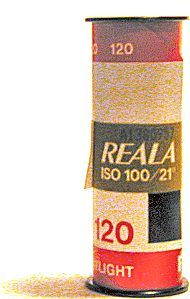
8 mm film is a motion picture film format in which the film strip is eight millimetres (0.31 in) wide. It exists in two main versions – the original standard 8 mm film, also known as regular 8 mm, and Super 8. Although both standard 8 mm and Super 8 are 8 mm wide, Super 8 has a larger image area because of its smaller and more widely spaced perforations.
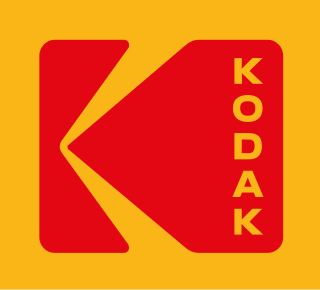
The Eastman Kodak Company, referred to simply as Kodak, is an American public company that produces various products related to its historic basis in film photography. The company is headquartered in Rochester, New York, and is incorporated in New Jersey. It is best known for photographic film products, which it brought to a mass market for the first time.

A box camera is a simple type of camera, the most common form being a cardboard or plastic box with a lens in one end and film at the other. They were sold in large numbers during the late 19th and early 20th centuries. The lenses are often single element designs meniscus fixed focus lens, or in better quality box cameras a doublet lens with minimal possible adjustments to the aperture or shutter speeds. Because of the inability to adjust focus, the small lens aperture and the low sensitivity of the sensitive materials available, these cameras work best in brightly lit day-lit scenes when the subject is within the hyperfocal distance for the lens and of subjects that move little during the exposure. Eventually, box cameras with photographic flash, shutter and aperture adjustment were introduced, allowing indoor photos.

135 film, more popularly referred to as 35 mm film or 35 mm, is a format of photographic film with a film gauge of 35 mm (1.4 in) loaded into a standardized type of magazine for use in 135 film cameras.

120 is a film format for still photography introduced by Kodak for their Brownie No. 2 in 1901. It was originally intended for amateur photography but was later superseded in this role by 135 film. 120 film survives to this day as the only medium format film that is readily available to both professionals and amateur enthusiasts.
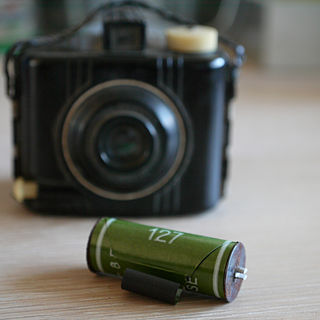
127 is a roll film format for still photography introduced by Kodak in 1912.

Advanced Photo System (APS) is a discontinued film format for still photography first produced in 1996. It was marketed by Eastman Kodak under the brand name Advantix, by FujiFilm under the name Nexia, by Agfa under the name Futura and by Konica as Centuria.
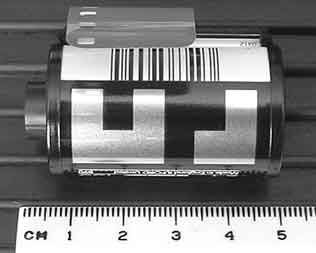
DX encoding is an ANSI and I3A standard, originally introduced by Kodak in March 1983, for marking 135 and APS photographic film and film cartridges. It consists of several parts, a latent image DX film edge barcode on the film below the sprocket holes, a code on the cartridge used by automatic cameras, and a barcode on the cartridge read by photo-finishing machines.
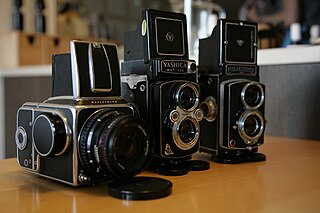
Medium format has traditionally referred to a film format in photography and the related cameras and equipment that use film. Nowadays, the term applies to film and digital cameras that record images on media larger than the 24 mm × 36 mm used in 35 mm photography, but smaller than 4 in × 5 in.

The Brownie was a series of camera models made by Eastman Kodak and first released in 1900.

The autographic system for roll film was launched by Kodak in 1914, and allowed the photographer to add written information on the film at the time of exposure.

Fujifilm Holdings Corporation, trading as Fujifilm, or simply Fuji, is a Japanese multinational conglomerate headquartered in Tokyo, Japan, operating in the areas of photography, optics, office and medical electronics, biotechnology, and chemicals.

An instant camera is a camera which uses self-developing film to create a chemically developed print shortly after taking the picture. Polaroid Corporation pioneered consumer-friendly instant cameras and film, and were followed by various other manufacturers.

Instant film is a type of photographic film that was introduced by Polaroid Corporation to produce a visible image within minutes or seconds of the photograph's exposure. The film contains the chemicals needed for developing and fixing the photograph, and the camera exposes and initiates the developing process after a photo has been taken.
A film holder is a accessory that holds one or more pieces of photographic film, for insertion into a camera or optical scanning device such as a dedicated film scanner or a flatbed scanner with film scanning capabilities. The widest use of the term refers to a device that holds sheet film for use in large format cameras, but it can also refer to various interchangeable devices in medium format or even 135 film camera systems.

Standard 8 mm film, also known as Regular 8 mm, Double 8 mm, Double Regular 8 mm film, or simply as Standard 8 or Regular 8, is an 8 mm film format originally developed by the Eastman Kodak company and released onto the market in 1932.
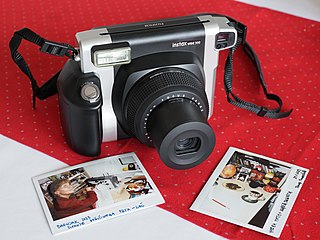
Instax is a brand of instant still cameras and instant films marketed by Fujifilm.
